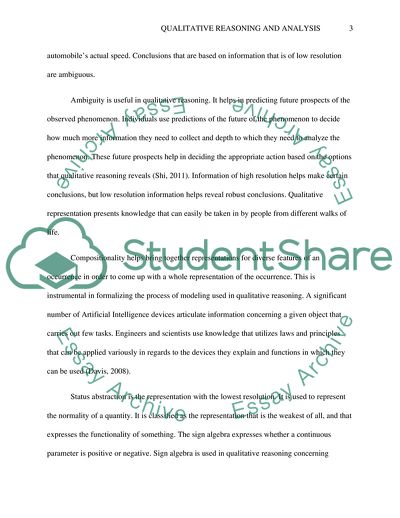Cite this document
(Qualitative Reasoning and Analysis Report Example | Topics and Well Written Essays - 1250 words, n.d.)
Qualitative Reasoning and Analysis Report Example | Topics and Well Written Essays - 1250 words. https://studentshare.org/psychology/1804911-assess-your-progress-and-skills-with-qualitative-reasoning-and-analysis-where-do-you-still-need-to-improve-and-what-is-your-plan-for-improving-those-skills-consider-what-role-this-course-has-played-in-helping-you-determine-a-dissertation-topic-approach
Qualitative Reasoning and Analysis Report Example | Topics and Well Written Essays - 1250 words. https://studentshare.org/psychology/1804911-assess-your-progress-and-skills-with-qualitative-reasoning-and-analysis-where-do-you-still-need-to-improve-and-what-is-your-plan-for-improving-those-skills-consider-what-role-this-course-has-played-in-helping-you-determine-a-dissertation-topic-approach
(Qualitative Reasoning and Analysis Report Example | Topics and Well Written Essays - 1250 Words)
Qualitative Reasoning and Analysis Report Example | Topics and Well Written Essays - 1250 Words. https://studentshare.org/psychology/1804911-assess-your-progress-and-skills-with-qualitative-reasoning-and-analysis-where-do-you-still-need-to-improve-and-what-is-your-plan-for-improving-those-skills-consider-what-role-this-course-has-played-in-helping-you-determine-a-dissertation-topic-approach.
Qualitative Reasoning and Analysis Report Example | Topics and Well Written Essays - 1250 Words. https://studentshare.org/psychology/1804911-assess-your-progress-and-skills-with-qualitative-reasoning-and-analysis-where-do-you-still-need-to-improve-and-what-is-your-plan-for-improving-those-skills-consider-what-role-this-course-has-played-in-helping-you-determine-a-dissertation-topic-approach.
“Qualitative Reasoning and Analysis Report Example | Topics and Well Written Essays - 1250 Words”. https://studentshare.org/psychology/1804911-assess-your-progress-and-skills-with-qualitative-reasoning-and-analysis-where-do-you-still-need-to-improve-and-what-is-your-plan-for-improving-those-skills-consider-what-role-this-course-has-played-in-helping-you-determine-a-dissertation-topic-approach.


